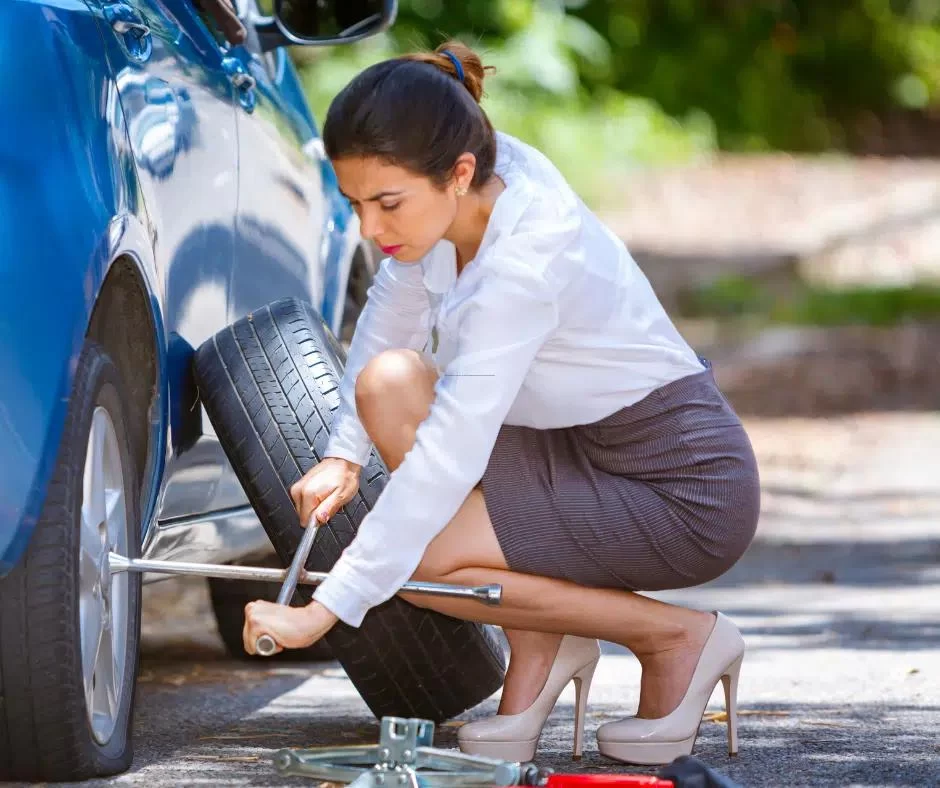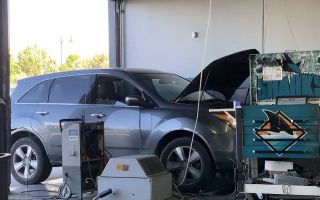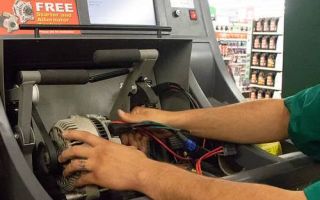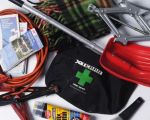What to Do When You Have a Flat Tire on a Busy Highway
A flat tire can happen to anyone, and when it does, it’s never convenient. But dealing with a flat tire on a busy highway can be especially stressful. The rush of traffic, the noise, and the constant fear of being hit can make the situation feel overwhelming. However, with the right knowledge and preparation, you can handle a flat tire situation effectively and safely. In this article, we’ll guide you through the process of dealing with a flat tire on a busy highway and share tips for ensuring your safety during this stressful event.

MR. TIRE INC.
2078 New York Ave, Huntington Station, NY 11746, USA
Stay Calm and Assess the Situation
When you notice that your tire is flat or your vehicle is driving differently, it's important to stay calm and assess the situation. Panic will only make things more difficult. Here are the initial steps to take:

MR. TIRE INC.
2078 New York Ave, Huntington Station, NY 11746, USA
1. Safely Pull Over to the Side of the Road
As soon as you realize you have a flat tire, it’s crucial to safely pull your vehicle to the side of the road. If possible, move to a shoulder or an area that’s out of the flow of traffic. Avoid stopping in areas where your vehicle might be hit by passing cars. In some cases, it’s best to slowly reduce speed and look for a wide, safe area to stop, such as an exit ramp, parking lot, or shoulder with enough space.
2. Turn On Your Hazard Lights
Once you’re safely pulled over, immediately turn on your hazard lights to alert other drivers of your situation. This is a critical step in staying visible and preventing accidents. Make sure your hazard lights stay on until help arrives, whether you plan to fix the tire yourself or need to call for assistance.
3. Assess the Traffic Around You
Before you exit your vehicle, take a moment to observe the flow of traffic around you. If you're on a busy highway, be aware of high-speed traffic and the possibility of other drivers not seeing your car. If traffic is heavy and there’s a risk of getting too close to the road, stay inside your vehicle with your seatbelt fastened until it’s safe to get out.
How to Change a Flat Tire on a Busy Highway
If you decide to change the tire yourself, it’s important to follow the correct procedure to ensure safety and avoid further damage. Here’s a step-by-step guide to changing your tire on a busy highway:
1. Gather the Necessary Tools
To change a flat tire, you'll need a few essential tools. These include:
- A spare tire
- A jack
- A lug wrench
- A wheel chock (optional but recommended)
- Gloves for protection
- A flashlight (if it's dark)
2. Loosen the Lug Nuts
Before you lift your vehicle with the jack, use the lug wrench to slightly loosen the lug nuts on the flat tire. Don’t remove them completely at this stage—just break their initial tightness. This is much easier to do while the car is still on the ground and stable.
3. Lift the Vehicle Using the Jack
Place the jack under the vehicle’s jacking point (check your car’s manual if you’re unsure where it is). Once it’s securely positioned, use the jack to raise the vehicle until the flat tire is off the ground. Make sure the vehicle is stable before proceeding.
4. Remove the Flat Tire
Now that the vehicle is elevated, remove the loosened lug nuts and carefully take the flat tire off. Place the tire aside, ensuring it won’t roll or cause any hazards while you’re working.
5. Install the Spare Tire
Position the spare tire onto the wheel hub and align it with the holes for the lug nuts. Once it’s in place, hand-tighten the lug nuts onto the spare tire. Be sure they are snug, but don’t fully tighten them just yet.
6. Lower the Vehicle
Slowly lower the vehicle back to the ground using the jack. Once it’s safely on the ground, use the lug wrench to fully tighten the lug nuts. Make sure they’re tight enough to secure the tire, but don’t overtighten them.
7. Pack Up Your Tools and Hit the Road
Once your spare tire is securely on the vehicle, pack up your tools and flat tire, ensuring nothing is left behind. You’re now ready to safely continue your journey. Keep in mind that a spare tire is typically a temporary solution, so it’s important to get your original tire repaired or replaced as soon as possible.
When to Call for Professional Help
While changing a flat tire can be a manageable task for many drivers, there are times when it’s better to call for professional help. Here are a few situations where it might be best to leave the tire change to the experts:
1. When You’re Uncomfortable or Unsure
If you're not confident in your ability to change the tire safely, or if you feel uncomfortable working on the side of a busy highway, it's best to call a roadside assistance service. Professionals have the right tools and experience to handle tire changes safely, even in high-traffic areas.
2. If You Don’t Have the Right Tools
If you find yourself without a spare tire or the necessary tools, don't attempt to continue your trip. Roadside assistance services can bring the tools and equipment needed to either fix or replace your tire.
3. If It’s Not Safe to Change the Tire
If traffic is moving too quickly or you feel it’s too dangerous to attempt a tire change, it’s important to call for help. Your safety is the priority, and professional towing or roadside assistance services are trained to handle these types of situations.
Real-Life Example: A Flat Tire on a Busy Highway
Case 1: The Family Road Trip
Take the case of a family on a road trip through California. They were driving along a busy freeway when their vehicle hit something sharp, resulting in a flat tire. They pulled over to the shoulder and quickly realized they weren’t comfortable changing the tire themselves, given the fast-moving traffic. A quick call to a roadside assistance service ensured that a professional arrived within 30 minutes to replace their tire safely and get them back on their way. Thanks to their decision to call for help, they avoided further complications and finished their trip without incident.
Case 2: The Business Trucking Emergency
In another instance, a delivery truck carrying urgent goods had a flat tire on a busy highway in the middle of the morning rush. The driver knew the importance of keeping the cargo on schedule, but given the high traffic volume and heavy load, changing the tire wasn’t a feasible option. A tow truck and roadside assistance team arrived swiftly, allowing the truck to get back on the road with minimal delay. This is a prime example of why professional help is essential in some flat tire situations.





























